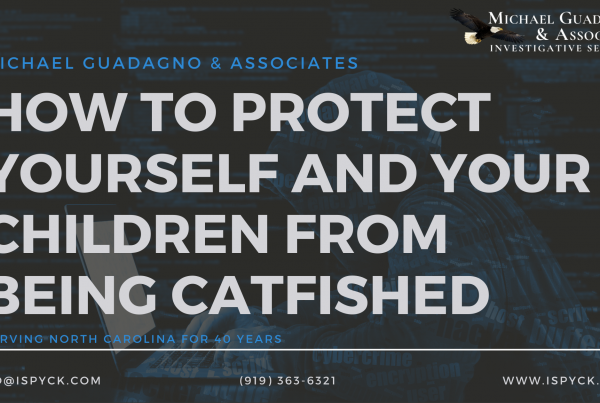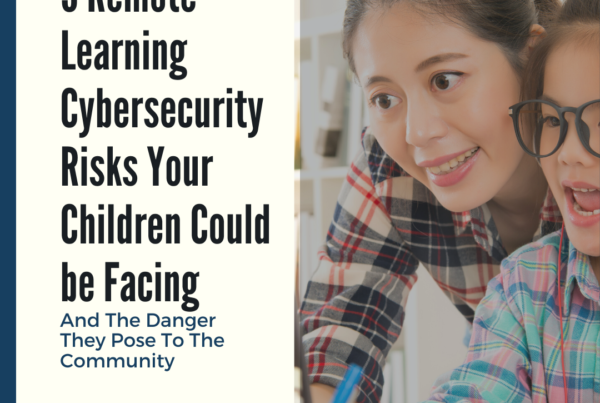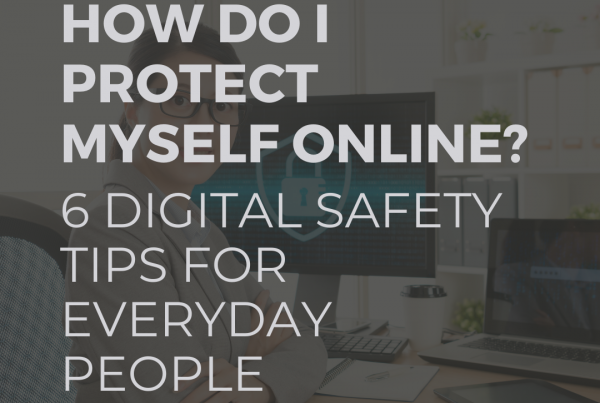
Thanks to technology, our children have the world at their fingertips. In seconds, they can hop online to chat up an old friend in Seattle, Facetime with their “online crush” in LA and play Fortnite with groups of people worldwide. They can help discover new galaxies or count Marine Iguanas on the Galapagos Islands for scientific research. They can create music on Patatap, learn how to make pretty much anything on YouTube, learn to speak a new language or just Blifaloo. Yes, the internet provides us all with more and more information daily and plenty of opportunities to do more, see more, hear more and say more than any other time in history.
One of the most significant aspects of the internet is social networking and how it connects us with one another. Sites like Facebook and LinkedIn give us a platform to share our voice with the world. We share our hopes and dreams, our feelings and our opinions. Whether it’s through a review, in a blog or simply a post on Facebook, our words get posted online, every day, for everyone to see, and sometimes those words hurt.
Like most things in life, especially when people are involved, there are both good and bad elements of the internet. For all the good that it does, some of the most deplorable human interactions happen online. Easier access to information opens the door for more misinformation. For all the benefits of online banking, shopping, and communication, people are looking to steal resources and your personal information for profit. And for every like-minded person you meet, there are trolls and bullies are looking to tear you down. As adults, we face this every day, and the more our kids are online, the more evil they will face.
What is Cyberbullying?
Cyberbullying is defined as the use of electronic communication to bully a person, typically by sending messages of an intimidating or threatening nature.
- Cyberbullying commonly occurs with children ages 6-18; however, it doesn’t necessarily stop when your child turns 18.
- Depending on their ages, up to 43% of students are digitally harassed online.
- Over half of adolescents and teens have been bullied online, and about the same number have engaged in cyberbullying.
- More than 1 in 3 young people have experienced cyberthreats online.
- Over 25 percent of adolescents and teens have been bullied repeatedly through their cell phones or the Internet.
- Over half of young people do not tell their parents when cyberbullying occurs.
While our goal in writing this article is to provide insight into our children’s cyberbullying, it’s essential to state cyberbullying affects us all. In fact, according to the Pew Research Center, in the US. 75% of adults have seen cyberbullying occurring around them. 40% of these adults have personally experienced some form of online harassment.
While we typically call it cyberbullying, it’s essential to understand that not all victims are bullied online, but they are digitally harassed in one way or another. Cyberbullying comes in many forms, such as:
- sending mean messages or threats to a person’s email or cell phone;
- spreading rumors on social media or through texts;
- posting hurtful or threatening messages on social media or web pages;
- stealing a person’s social media account information to break into their account and send damaging messages;
- catfishing: pretending to be someone else online to hurt or stalk another person online;
- taking unflattering pictures of a person and spreading them through cell phones or the Internet; and
- sexting, or circulating sexually suggestive pictures or messages about a person.
The Science Behind Cyberbullying
Bullies aren’t a new phenomenon; they’ve been around since the dawn of time; however, internet or cyberbullies have taken bullying to a whole other level. Cyber harassment is an issue our kids face daily. Whether they are getting bullied or doing the bullying, cyberbullying can have life-long effects for both, such as depression, anger, and sadness. Those victimized by cyberbullying reveal they are often afraid or embarrassed to go to school leading to a host of academic and social issues, while those doing the bullying often progress to more serious criminal activity and substance abuse.
Dr. Sam Goldstein is a Board Certified pediatric neuropsychologist specializing in forensics, school psychology, child development and neuropsychology. He recently wrote a report on The Science of Cyberbullying. In it, he explains, “There is a large, emerging body of research suggesting that bullies are more likely to be convicted of criminal offenses as adults, suffer from greater psychiatric problems, have difficulty with relationships and abuse substances. Victims of bullying also suffer, including reports of loneliness, diminished self-esteem, physical complaints and depression. They also have been reported to have a higher rate of suicidal thoughts and attempts.”
Because cyberbullying can occur anonymously, cyberbullies often act more aggressively as they feel there will be no consequences. In face-to-face bullying, the bully can view the impact as the attack happens. In contrast, cyberbullies cannot see any of the immediate outcomes, often resulting in further waves of aggression. Cyberbullying can also come from those who would not typically be face-to-face bullies. In fact, studies have shown victims who experienced both forms of bullying are 38% more likely to start showing aggressive behavior. This compared with 15% of those who were cyberbullied and 4% of those who were victims of face-to-face bullying alone.
Why do Bully’s Bully?
Ditch the Label is an excellent resource for parents, kids and teachers who want to help others deal with cyberbullying or need help themselves. Recently, they interviewed 8,850 people about bullying and asked if they ever bullied anyone. 1239 responded yes and shared life experiences that may have led to their actions. Here is what they found:
- Stress/Trauma: Those who bully are more likely to have experienced a major traumatic event within the last five years, such as divorce, death of a close family member or an unwanted move from their friends. Instead of learning positive ways to relieve stress, they turned to bully as a way to cope.
- Male Aggression: 66% of those who said they bullied people in the past were male. Boys are taught to hide their emotions, so instead, they turn to aggression. This is Learned Behavior. Parents, coaches, and society, in general, are at fault. Terms like “Man-up” or “boys don’t cry” are out-dated and can lead to more trouble down the road. We need to address this culture and teach boys how to deal with their emotions positively.
- Low Self-Esteem: Thanks to social media, now more than ever, our children are expected to live up to beauty and fitness standards they are taught by comparing themselves to others, instead of embracing their awesomeness.
- They were Bullied: The research they compiled shows that those who have experienced bullying are twice as likely to go on and bully others.
- Trouble at Home: 1 in 3 of those who bully people daily stated they feel like their parents/guardians don’t have enough time to spend with them. They may come from broken homes, feel rejected by their parents and are often the victims of abuse themselves.
- Poor Education: There are mountains of evidence that show without access to education, hate-based conversation is an everyday occurrence in the home or community.
- Social life: Those who bully are more likely to feel like their friendships and family relationships aren’t very secure. They may act out to impress a particular crowd, and it’s often at the expense of others.
What makes Cyberbullying Worse than Face-to-Face Bullying?
Cyberbullying is less physical than traditional forms of bullying; however, it can have more devastating and longer-lasting effects. A small, physically weak child can be as much of a bully as the big brute but with more impact. Parents and teachers must understand how powerful and dangerous this type of bullying has become, as it has dramatically impacted the classroom.
There are a few aspects of cyberbullying that differentiate it from traditional bullying. These include:
- Anonymous: The anonymity of the internet can lead to crueler or harsher abuses from the bully, all while the victim has no means of discovering who their harasser is.
- Hard to Spot: Cyberbullying doesn’t leave black eyes or bloody noses; the damage is internal and emotional, making it more challenging to catch.
- Relentless: Face-to-face bullying ends once school is out or the child gets home. Cyberbullying does not stop. Cyberbullies can torment their victim 24/7, making it difficult for the victim to escape it by going home or even changing schools.
- Public: Face-to-face bullying usually happens within a group, school or community and stops there. Cyberbullying is online for the world to see and can even inspire others to get involved in making things much worse for the victim.
- Permanent: Once it’s online, it’s always there. Even if it’s deleted, someone may have saved it and posted it somewhere else. This can be embarrassing and damaging to both the victim and the bully.
Cyberbullying and harassment are not going away anytime soon; however, North Carolina has established a few laws to help deter cyberbullying.
Cyberbullying may be charged under North Carolina’s stalking law when the bully engaged two or more acts against a targeted victim that the bully knew (or should have known) would
- put the victim in reasonable fear for the victim’s safety (or the safety of a family member or friend), or
- cause the victim to suffer substantial distress in fearing death, bodily injury, or continued harassment from the bully. (N.C. Gen. Stat. Ann. §14-277.3A.)
North Carolina also has a specific cyberbullying law that criminalizes using a computer to engage in one of several specified prohibited behaviors. These behaviors include creating a fake user profile or posing as a minor and communicating with or posting images or messages about a minor in order to intimidate or torment that minor or the minor’s parent. (N.C. Gen. Stat. Ann. §14-458.1.)
If your child is bullying others, it’s your duty as a parent or teacher to step up and address the situation.
Here is a list of resources to help:
- Stop Bullying Now
- Kids Health
- NEA Guide on Parent’s Role in Bullying and Intervention
- A Fine Parent’s 10 Things Every Parent Can Do to Stop Bullying
Later this week, we will share 8 Tips on How to Handle a Cyberbully on Facebook, so be sure to follow us, so you don’t miss it.
Michael Guadagno & Associates doesn’t just catch the bad guys; we help prevent bad situations from occurring. If you’re planning to make a big decision and need assurances, contact us.
🖥 www.ispyck.com
☎️ (919) 363-6321
📨 [email protected]





